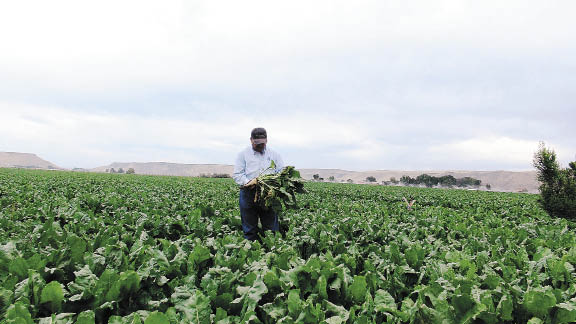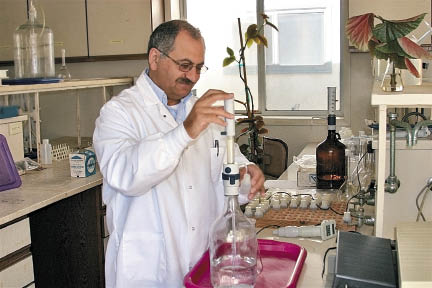 Due to different textural components of soil, soil types and on-farm cultural practices, soil compaction has become a major problem in crop production.
Due to different textural components of soil, soil types and on-farm cultural practices, soil compaction has become a major problem in crop production.
Soil retention is the main soil-water property that governs soil functionality as an ecosystem. Soil moisture forms a major buffer against flooding. Water capacity in subsoil is a prime factor for plant growth.
Our numerous on-farm studies have been conducted using compost, organic acids (Actagro Liquid Humus), and other soil amendments, such as Penetron and Wet-Sol, and clearly indicated their influence on soil's physical, chemical and biological properties. The ability of soil organic matter to bind water has become an important subject for research in past years. Because of a decline in organic compounds in the soil since 1900, followed by a decrease in the quantity of soil's fauna and flora species, there is a consequent decrease in water retention. Declining soil organic compounds, coupled with a decrease in the quantity of soil's fauna and flora species have consequently caused a decrease in water retention.
 Interruption of soil moisture to the root zone causes difficulties in yield, quality and grade. It may also influence some diseases. Moisture interruption causes uneven uptakes of fertilizer. Water, nutrients and roots reside in micropores. Soil organic amendments help create more micropores, which assist in water and nutrient translocations. Prolonging excessive moisture is also a major cause of most diseases.
Interruption of soil moisture to the root zone causes difficulties in yield, quality and grade. It may also influence some diseases. Moisture interruption causes uneven uptakes of fertilizer. Water, nutrients and roots reside in micropores. Soil organic amendments help create more micropores, which assist in water and nutrient translocations. Prolonging excessive moisture is also a major cause of most diseases.
Our three years of study with Actagro Liquid Humus enhanced water sequestration by 11.2 percent, enhanced yield increases and helped with yield quality and tare dirt during the harvest. The use of humic substances created strong organo-mineral complexes (aggregation), chelation, as well as buffering capacities. We evaluated the influence of Penetron on sugarbeet and potato fields, evaluating water infiltration and tare dirt. We evaluated data from 16 fields and compared to check. Our observation and field demonstrations indicated there was a marked increase in water retention, less tare dirt and higher yields.
 Replicated studies by Dr. Robert Thornton, et al, from Washington State University on center pivot irrigated potato fields from 1985 through 1994, showed that application of the soil enhancer, Wet-Sol, resulted in positive effects.
Replicated studies by Dr. Robert Thornton, et al, from Washington State University on center pivot irrigated potato fields from 1985 through 1994, showed that application of the soil enhancer, Wet-Sol, resulted in positive effects.
The early trials indicated that treatment resulted in deeper soil moisture penetration during the season. Later trials indicated that petiole nitrate nitrogen levels of treated plants were higher and vine lengths were longer than the untreated control plants. Total tuber yield and marketable yields were higher. There was clear evidence that certain soil types showed a lower incidence of internal tuber disorders. Results of soil compaction tests in 1993-94 showed that application of Wet-Sol to heavy (loam) and sandy soils increased the depth where compacted soil was detected and resulted in deeper soil moisture penetration.
Most of the trials were conducted on the Russet Burbank cultivars, grown on the sandy soils of the Columbia River Basin in Washington state.
We evaluated different compost sources, such as feedlot and dairy compost and wood products. We applied 5-10-15- and 20-tons per acre of these compost types and incorporated into the soil 6, 8 and 12 inches deep. We also evaluated mineralization rates which focus on how microbes change organic residuals to inorganic form (such NO3-N & NH4-N).
In sugarbeets, caution must be taken to understand the carbon-nitrogen ratio so the mineralization occurs before June 15 row closures. If it happens after June, it will impact sugar accumulation and negatively increase your conductivity. When you're buying and using compost, you must consider two important factors. 1) The carbon:nitrogen ratio should be C20:N1 or C30:N1. 2) Electroconductivity should be less than 3 mmohs/cm. For more detailed information on compost, refer to the University of Idaho publication, "Compost: Production, Quality and Use in Agriculture" at www.cals.uidaho.edu/edcomm/pdf/CIS/CIS1175.pdf.
Our studies showed that farmers' cultural practices, especially irrigation management, influence compost mineralization. When you apply compost, you shouldn't over-irrigate, due to the fact that it holds more moisture. That will negatively influence your mineralization and may create more root diseases due to anaerobic conditions.
Compost use increased vertical and horizontal water penetration and retained optimal moisture at the root zone. It also helped compacted soil and overcoming clodding and crusting problems.
We learned that applying too much compost or raw manure at the rate of 15-20 tons per acre enhanced rhizoctonia pressure at some sugarbeet fields. This happened in the fields that were over-irrigated or in which the compost wasn't spread evenly or incorporated properly. We analyzed and calculated the salt level of feedlot and dairy compost, finding from 25-30 pounds of salt per ton.
When applying compost or manure, you need to obtain a lab analysis to calculate the amount of salt you have per ton and how many tons of compost or manure you are applying to know the total amount of salt you are putting in the soil.
In summary, we conclude that applying organic soil amendments will enhance your soil's physical, chemical and biological activities, which enhance fertilizer and water use efficiency.